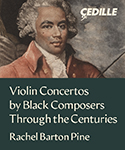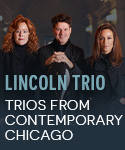Volume 2 of Naxos’ complete Caruso bridges the great tenor’s last European recordings into his first American sessions for Victor. Caruso’s 1904/5 New York recordings cover much of the same ground as his earlier Milan G&T sides. The later ones, however, reveal Caruso’s increased poise, comfort, and control in front of the acoustic horn. What’s more, the Victors are better recorded than the G&Ts. By the time Caruso recorded his first sessions with orchestra (the last five selections on the disc), the tenor had hit his stride in the studio. What more can you say about Caruso’s tenderly spun M’appari (almost as good as his 1917 remake), the fluid power of Che gelida manina, or the galvanizing Di quella pira with a high B that’s kept tenors honest for nearly a century?
As with Volume 1 in this series, Ward Marston’s transfers of the piano items are noisier and brighter than William Moran’s darker, more impactive ones for RCA’s Complete Caruso edition. While I prefer Moran’s transfers of the three 1903 Pathé Frères items, it’s a tossup for the 1904/5 Victors. Some listeners might prefer Marston’s airier equalizing of the voice; others might find Moran’s mid-range emphasis to reveal more of the voice’s baritonal qualities, plus a piano that sounds like a piano rather than a cimbalom. Marston’s straightforward transfers of the 1906 orchestral sides retain the ambience, balance between voice and instruments, plus the upper partials of the original shellacs. By contrast, RCA’s controversial computerized restorations, though superficially attractive, have always struck me as the aural equivalent to Ted Turner’s colorizing black and white films. Caruso mavens need no prodding from this writer. But if you’re just getting started in Caruso appreciation 101, wait for Volume 3 to appear.
































